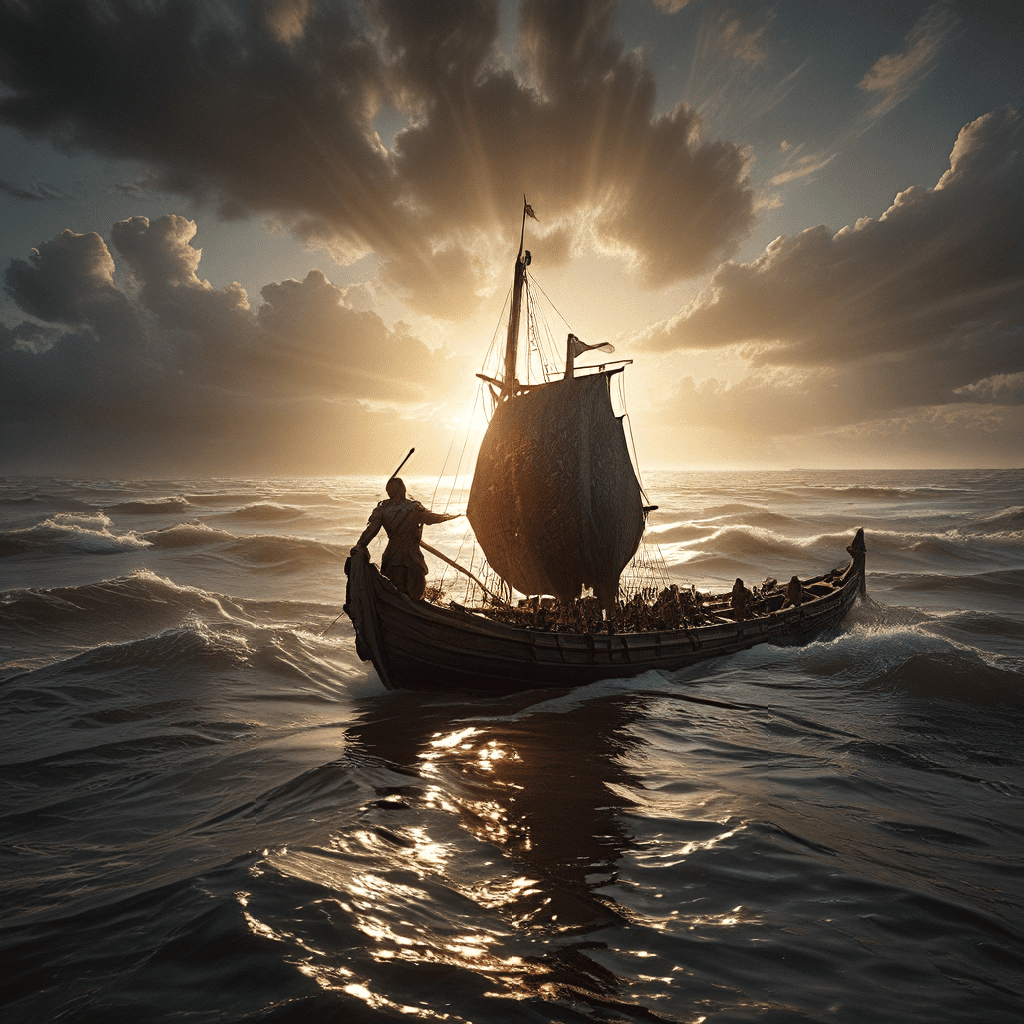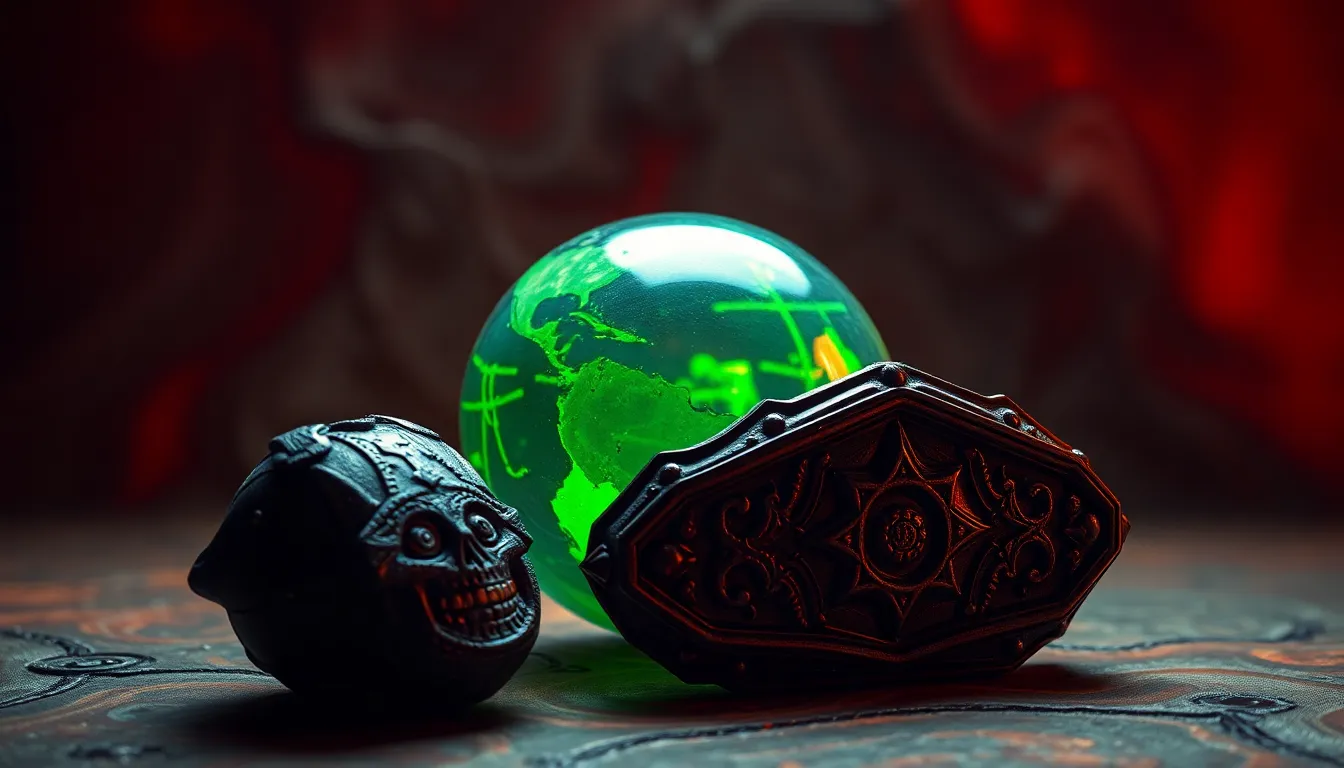Baltic Mythology: A Tapestry of Nature and the Supernatural
The Baltic region, encompassing countries like Latvia, Lithuania, and Estonia, boasts a rich tapestry of folklore and ancient beliefs. Baltic mythology, a fascinating blend of nature worship and supernatural entities, reflects the deep connection people had with their surroundings and the forces that shaped their lives. It is a vibrant system of myths and legends that offer insights into the ancient worldview of the Baltic people.
The Eternal Struggle: Light and Darkness in Baltic Belief
Central to Baltic mythology is the eternal struggle between light and darkness, order and chaos. This recurring theme pervades many of their stories and reflects the fundamental duality present in nature and human existence. The forces of light are associated with creation, life, and prosperity, while the forces of darkness represent destruction, death, and misfortune.
This eternal battle is not just a symbolic representation but a living force in the Baltic worldview. It permeates their worldview, shaping their understanding of the world and their place within it.
Dievas, the Sky God: Embodiment of Light and Order
Dievas, the supreme sky god, embodies the forces of light and order. He is a benevolent deity responsible for creation, the sun, and the well-being of humanity. Dievas is often depicted as a powerful and benevolent figure, wielding the forces of nature to maintain balance and harmony.
His role is to ensure the continuity of life, protect the people from harm, and guide them towards a prosperous future. Dievas embodies the ideals of justice, righteousness, and the eternal cycle of life, death, and renewal.
Velnias, the Devil: The Shadowy Force of Chaos and Destruction
Velnias, the Devil, represents the forces of darkness and chaos. He is a trickster and a bringer of misfortune, often associated with disease, death, and the perils of the forest. Velnias is a symbol of temptation, deception, and the ever-present threat of evil.
Velnias can be both cunning and powerful, but he is ultimately a force of disruption and disharmony. His presence in Baltic mythology serves as a reminder of the inherent dangers and challenges that humans face in their journey through life.
The Tree of Life: Symbol of Cosmic Balance and Connection
The Tree of Life, a recurring symbol in Baltic mythology, represents the interconnectedness of all things. It symbolizes the cosmic balance between heaven and earth, the divine and the mortal. Its roots reach deep into the earth, drawing sustenance from the earth and connecting to the underworld. Its branches reach towards the heavens, connecting to the sky gods and the celestial realm.
The Tree of Life serves as a reminder that all things are interconnected, and that the well-being of one part of the world depends on the health and vitality of the whole. It symbolizes the interdependence of all living things and the importance of maintaining balance within the natural world.
Creation Myths: The Origins of the World and the Divine Spark
Baltic creation myths paint a vivid picture of the world's beginnings. One popular story tells of how Dievas, the sky god, created the world from a giant egg. The egg's shell became the sky, while the yolk transformed into the earth. This myth reflects the cyclical nature of life and the interconnectedness of all things.
Another creation myth describes the world as emerging from a primordial sea. This story emphasizes the importance of water, a vital element for life and growth in the Baltic region. These myths highlight the importance of the divine in shaping the world and the role of nature in human existence.
The Afterlife: Journey to the Otherworld and the Role of Ancestors
In Baltic mythology, death is not an end, but a transition to the otherworld. The concept of the afterlife is closely tied to the veneration of ancestors and the belief in their continued presence in the world of the living.
The journey to the otherworld is often portrayed as a perilous path, fraught with challenges and dangers. The deceased must navigate through forests, rivers, and mountains, encountering various supernatural beings and obstacles. Those who successfully reach the otherworld join their ancestors and continue to influence the lives of those still living.
The Role of Nature: Animals, Plants, and Natural Phenomena as Divine Manifestations
The Baltic people saw the natural world as filled with divine beings and spirits. Animals, plants, and natural phenomena were believed to possess spiritual power and were often associated with specific deities or ancestors.
Trees were seen as sacred beings, capable of communicating with humans and acting as conduits between the world of the living and the otherworld. Animals represented different aspects of nature, with each possessing unique qualities and abilities. Birds were messengers of the gods, while wolves were associated with strength and courage. The sun, moon, and stars were celestial beings, each with its own role in the cosmic order.
The Influence of Baltic Mythology on Folklore and Traditions
Baltic mythology provided a framework for understanding the world and shaped their cultural practices. Folklore and traditions were passed down through generations, preserving the ancient stories and beliefs.
Songs, dances, and rituals celebrated the gods, honored the ancestors, and sought protection from the forces of darkness. Baltic mythology had a profound influence on their social structure, laws, and moral values.
Modern Interpretations: Exploring Themes of Light and Darkness in Contemporary Culture
Baltic mythology continues to resonate with contemporary audiences. Its timeless themes of light and darkness, order and chaos, and the interconnectedness of nature and human existence remain relevant in today's world.
Contemporary artists, writers, and musicians have drawn inspiration from Baltic mythology, incorporating its imagery, symbolism, and storytelling traditions into their works. These modern interpretations explore the complexities of human nature, the search for meaning and purpose, and the challenges of navigating a rapidly changing world.
FAQ
Q: What are some examples of Baltic creation myths?
A: One popular creation myth tells of how Dievas, the sky god, created the world from a giant egg. Another myth describes the world as emerging from a primordial sea.
Q: How does Baltic mythology view death?
A: Death is not an end but a transition to the otherworld where the deceased join their ancestors.
Q: What is the role of nature in Baltic mythology?
A: Nature is seen as filled with divine beings and spirits. Animals, plants, and natural phenomena are believed to possess spiritual power.
Q: What is the Tree of Life in Baltic mythology?
A: The Tree of Life symbolizes the interconnectedness of all things and the cosmic balance between heaven and earth.


